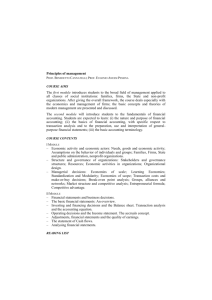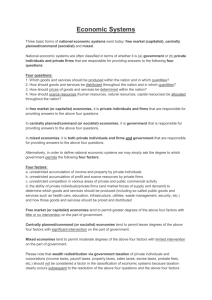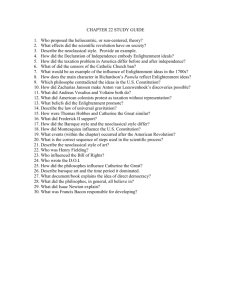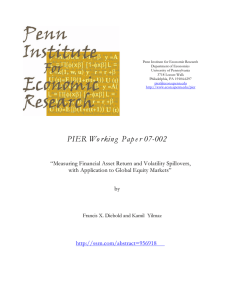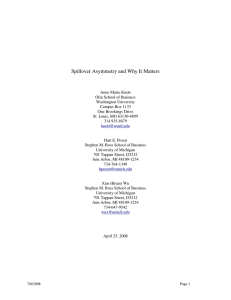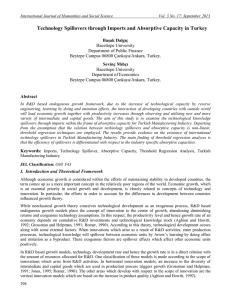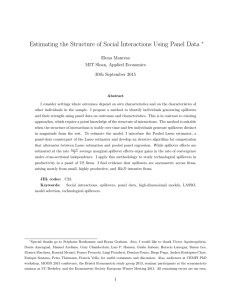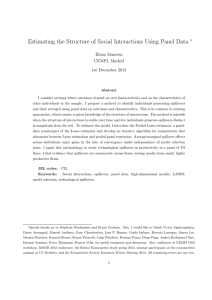Neoclassical explanations on multinational-driven
advertisement
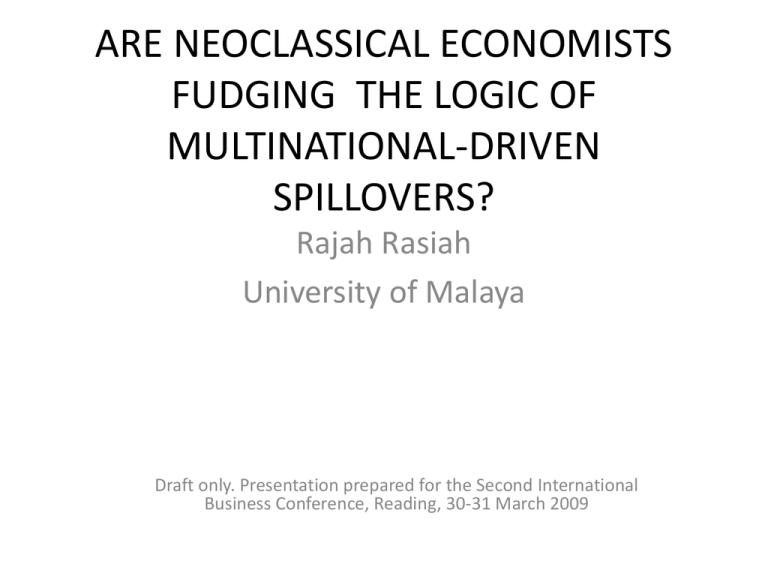
ARE NEOCLASSICAL ECONOMISTS FUDGING THE LOGIC OF MULTINATIONAL-DRIVEN SPILLOVERS? Rajah Rasiah University of Malaya Draft only. Presentation prepared for the Second International Business Conference, Reading, 30-31 March 2009 1. Introduction • Neoclassical explanations on multinational-driven development spillovers provide little epistemological support – by way of theorizing as well as methodology. • Neoclassical theory argues that once left to market forces endowmentright multinationals will relocate from a relatively capital-rich and technologically advanced nation to a relatively capital-poor and technologically backward nation, and that the spontaneous interaction of institutions will engender spillover responses. • This presentation discusses some evidence on why I think the framework is fudging the concept of spillover especially when dealing with the ‘emerging economies’. Emerging economies are considered to have some threshold of institutional development to support spillovers. It is here that I found Dunning’s eclectic paradigm useful in conducting investigations of spillovers – with a balance of inductive and deductive theorizing. The specificity of economies can also be addressed. 2. Broad-brush explanations • Early neoclassical work on FDI relaxed the immobile factor conditions imposed in the Hecksher-Ohlin (see Leamer, 1995) model to allow international capital movements (Bhagwati, 1979). However, this framework simply assumes that the outflow of capital from a capital surplus and labour scarce economy (United States) to a capital scarce and labour surplus economy (Mexico) will eventually lead to the equalization of interests and wages and with that convergence of development between these economies (see Figure 1). Markets are deemed to automatically drive equalization of factor prices across borders. • The underlying neoclassical assumptions that markets are efficient and economic agents enjoy equal access, and processing and decision making abilities are wrong. Instead of assuming that proactive and stable governments attempt to create or use market instruments to drive allocation and coordination, it assumes that the unleashing of market forces will resolve government failures. By arguing that all governments had to do was to leave markets to coordinate resource and factor allocation, neoclassical theory continues to discourage the institutional upgrading essential to quicken technical change. • I argue that international business (IB) theorists have provided a more cogent explication of multinational relocation and in doing so also argued that the motives behind relocation to a large extent help explain the extent to which they will participate actively in spillover activities. The basis for this framework comes originally from Dunning’s (1958) inductive work using empirical evidence to explain the reasons for relocation of American firms in the United Kingdom and what benefits can UK generate from it. Dunning’s ownership, location and internalization (OLI) framework provided the theory explaining these developments. The work of Rugman in distinguishing and integrating firm- and country specific assets help advance this further. Narula and Dunning (2000) and Cantwell and Mudambi (2005) evolved this to a broader framework led by motives. • One clear area where the IB framework can easily absorb reverse flows of FDI to absorb knowledge is the motives driving multinationals off-shoring of knowledge-intensive activities in the emerging economies of India, Israel and Taiwan. This epistemological approach using evidence also provides for the specificity of all countries. Knowledge flows from multinationals to local firms – ala Japan, Korea and Taiwan differs from Singapore, Malaysia, Thailand and Philippines. Figure 1: Neoclassical Trade and Foreign Direct Investment Thesis on Convergence High Income Economies(HIE) CapitalIntensive Surplus K Scarce L 1. Scarce capital 2. Demonstration effect (technology) 3. Competition 4. Scale from export markets 5. Learning through trade Middle Income Economies Investment Flows Lower Middle Income Economies Trade Flows LDEs Labourintensive Surplus L Scarce K Labour-intensive Before Free Capital (K) and Trade Flows After Free Capital (K) and Trade Flows HIEs r1 , W1 , Y1 X1/M1 LDEs r2 , W2 , Y2 X2/M2 HIEs r , W,Y X/M LDEs r , W,Y X/M 3. Specific Spillover Explanations • Driven by the notion that relative prices will attract FDI, the implicit assumptions of neoclassical production function models assume that the changing structure of prices as capital flows from rich to poor countries will offer optimal conditions for spillover to take place at host-sites. Caves (1974) adapted Solow’s (1956) production function model to first estimate spillovers from foreign presence. • However, the neoclassical evidence on spillovers is mixed. On the one hand, Caves (1974), Blomstrom and Persson (1983) and Blomstrom and Sjoholm (1999) produced evidence of positive spillovers from the presence of foreign firms in Australia, Mexico and Indonesia respectively. On the other hand, Haddad and Harrison (1993), Kokko, Tansini and Zejan (1996) and Aitkin and Harrison (1999) show a lack of spillovers to domestic firms from foreign presence in Morocco, Uruguay and Venezuela respectively. These contradictory findings not only show problems with neoclassical estimation methods but also a disjuncture between theory and reality. • Importance of multinationals’ motives for relocation is critical for understanding spillover potential (see Dunning, 1958, 1979; Narula and Dunning, 2000; Cantwell and Mudambi, 2005). This inductive microeconomic approach is vital. • The contradictory findings on spillovers are also a result of methodological weaknesses. The use of the production function is undermined by at least three problems. Firstly, the residue in the production function used to measure total factor productivity, as Romer (1994), Nelson (1994) and Vaitsos (2003) have argued, does not capture technology or technical change. Secondly, spillover is a dynamic concept that refers to systemic effects captured by economic agents (including workers) external to the firms studied and hence often do not appear in pecuniary measures (see Marshall, 1890; Rosenstein-Rodan, 1944; Scitovsky, 1962; Rasiah, 1992). Thirdly, spillovers enjoy differences in intensity – including positive and negative elements making its aggregation impossible. • While it is important to identify the most dynamic sectors that can generate the greatest synergies once that is addressed the larger the technological ap between foreign and local firms the more will the potential of diffusion provided the requisite initiatives and supporting instruments are in place (Hirschman, 1970). In addition, production function models analyzing technological gap either estimate it wrongly using the value of machinery and equipment of firms, capital expenditure or productivity differences between foreign and local firms. Differences in the stock of knowledge – embodied in humans, machinery and equipment and relationships – cannot be estimated this way. Besides, efforts to draw policy conclusions from mere differences in productivity and technological levels do not take cognizance of structural interdependence between industries and complementarities (see Kaldor, 1979). • • IB theory has much to contribute here as a snowballing methodology tracing the sources of spillover will offer the best netting to capture it, though it cannot be estimated exhaustively (as it is external to firms) (see Rasiah, 1994). The use of case and tracer studies is good here.
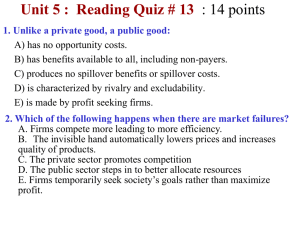

![[DOCX 51.43KB]](http://s3.studylib.net/store/data/007172908_1-9fbe7e9e1240b01879b0c095d6b49d99-300x300.png)
